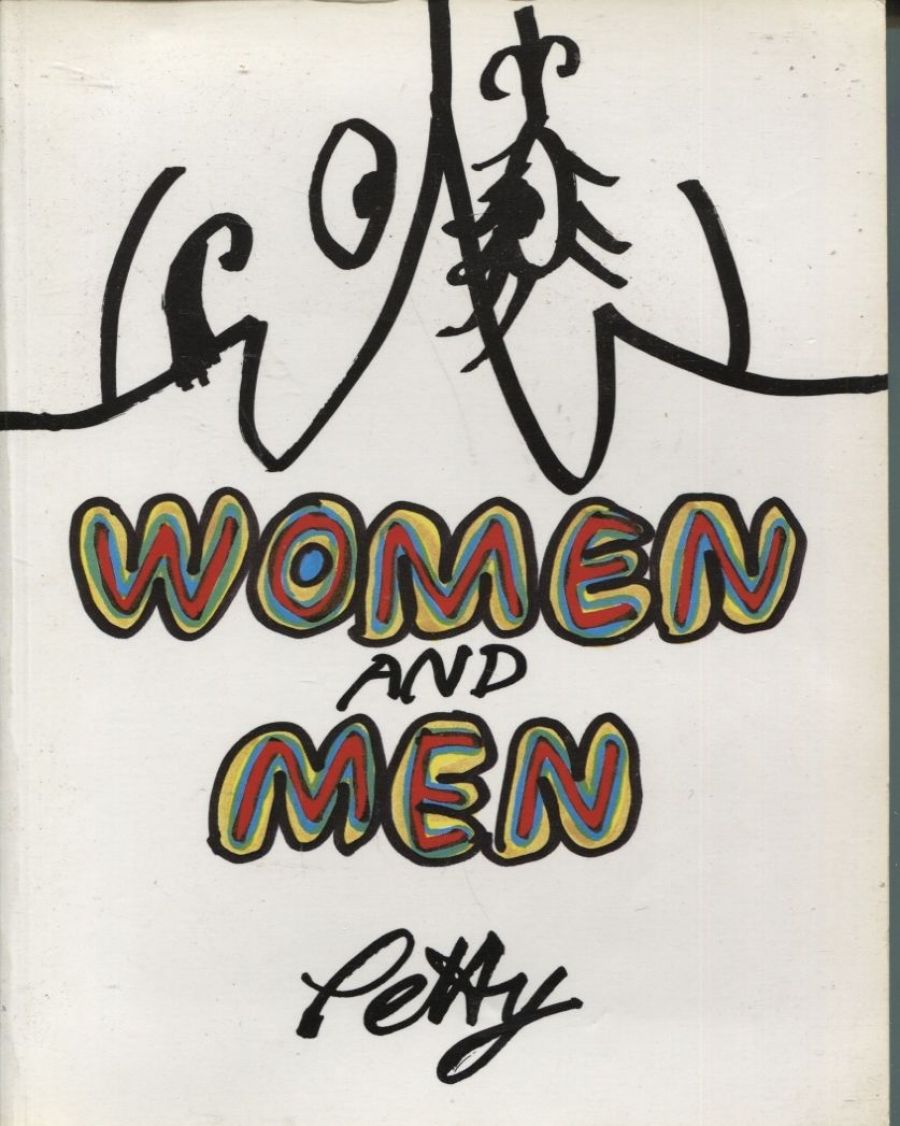
- Free Article: No
- Contents Category: Non-fiction
- Review Article: Yes
- Online Only: No
- Custom Highlight Text:
More than in any other way, Australian humour has evolved and found its greatest expression not through the nation’s writers, entertainers, or film makers, but by the means of cartoonists drawing for the Australian press. This humour had two significant periods of development - the first beginning with the founding of the Bulletin a little over a century ago when the editors of this illustrated publication, notably J.F. Archibald, encouraged and fostered native talent, especially those artists of the day with comic graphic skills.
- Book 1 Title: Women and Men
- Book 1 Biblio: Allen & Unwin, 148 pp, $15.95 pb
This theme persisted and was further celebrated, but in a somewhat coarser manner, during the second development of Australian humour with the extraordinary group of cartoonists – men and women – who worked on the staff of that most famous of ‘between the wars’ newspapers, Smith’s Weekly.
Whole broadsheet pages were smothered with joke cartoons about ‘Dad and Dave’, New Chums, ‘Jacky’ Aborigine humour and other ‘Woop Woop’ bush subjects. Others, urban in character – drunks, divorcees, flirting flappers, old soldiers, and gambling – were combining to form an Indigenous humour which, besides being rough-edged, zesty, and simplistic, declared a hairy-chested chauvinism of a sort that exposed a gum-leaf-and-wattle innocence and cultural isolation at the time.
But all that was to change with third development of Australian humour which was, by the 1960s, well under way. Though it was imperceptible at first, and generated by only a few cartoonists, innovators such as George Molnar, Martin Sharp, Michael Leunig and Bruce Petty were introducing a ‘literary’ quality, and, for the first time wit and sophistication into Australian comic art.
Because Australia grows less and less isolated by distance and time, and has become very much a part of the larger international community, it is not surprising that this is reflected in the work of most Australian cartoonists in some form or another, and traditional characteristics give way to those more international. It is surprising, though, that no Australian writer, entertainer, or cartoonist has fully developed, as those of other countries have, biting satire, nor brilliant wit, as an art form – there are occasional examples only. The author Peter Mathers came close once with his novel Trap, Michael Leunig is the most consistent, and fellow cartoonist Bruce Petty has succeeded several times, notably with his Money Book published in 1983, and now again in his latest offering of more social comment titled, with a nice old-fashioned priority for the sexes, Women and Men. With witty text and his familiar doodle-type drawings of men and women as a biological species, not as famous or even well-known personalities. Petty romps satirically through Western history and the role of women and men creating it, beginning his genesis thus:
There are two main theories about men and women. One theory is that God created them. The other theory is that a lot of carbon molecules couldn’t help themselves.
Creation by God is self-explanatory. Founded firmly on the notions of spiritual essence, consuming love and infinite wisdom, the theory that God created men and women is easy to grasp.
On the other hand, the chemicals in space idea is tricky. The irrefutable scientific theory that men and women constructed themselves from a few long carbon molecules and a couple of coils of amino acids requires a massive faith in the supernatural.
As his admirers know, Bruce Petty has a fascination for machinery and draws weird constructions of pistons and pulleys and gears symbolising the clanking human condition of frustration, complication and the treadmill life as man pursues the largely unobtainable ambition of material possession in twentieth-century suburbia. And two other symbols emerge as a theme from these drawings – one a bedstead, frequently with its female and male occupants; for naturally, if history is to continue, then people are needed to make it. And his second, not as formerly the Energy equation, but the maths symbol 2πR brilliantly identifying ‘Science’, which Bruce Petty depicts in his evolution when the test tube and the monstrance clash. It is all incisive stuff.
As we saw in his Money Book Bruce Petty has a finely tuned ‘ear’ (and indeed ·eye’) for jargon in general – in this book he mocks computer-’speak’ in a witty set of drawings showing the innards and workings of the ‘self-reproducing egg and womb unit complete with independent variation sperm device.’ ‘A major decision’, he explains, ‘was to develop a matching auxiliary input apparatus to provide some variations and improvement potential ... The soft-seed producer [woman] was a highly sophisticated, intricately wired, chemically post-modern sensor system which needed a lot of attention. The hard seed input auxiliary [man] was structurally over-powered, top heavy and hard to start.’
So, ‘women and men’, Petty claims, ‘evolved from self-replacing molecule sets, or God, to modern humans searching for meaningful relationships and something decent on T.Y. It is just bad luck that the passion and energy, so carefully designed to produce brilliant women and men, was used in our spare time, to construct a terrifying planet. The great women and men show might close temporarily for repairs.’
Wit with a wince!
The nature and character of Australian humour, as expressed by its graphic creators, may be changing and losing its national flavour; but some of its elements, particularly irreverence, emerge from the satire of Bruce Petty. He has a quality of mind that commands respect.
When he is not designing books, Vane Lindesay scribbles words, and draws pictures in Ripponlea, Melbourne.


Comments powered by CComment